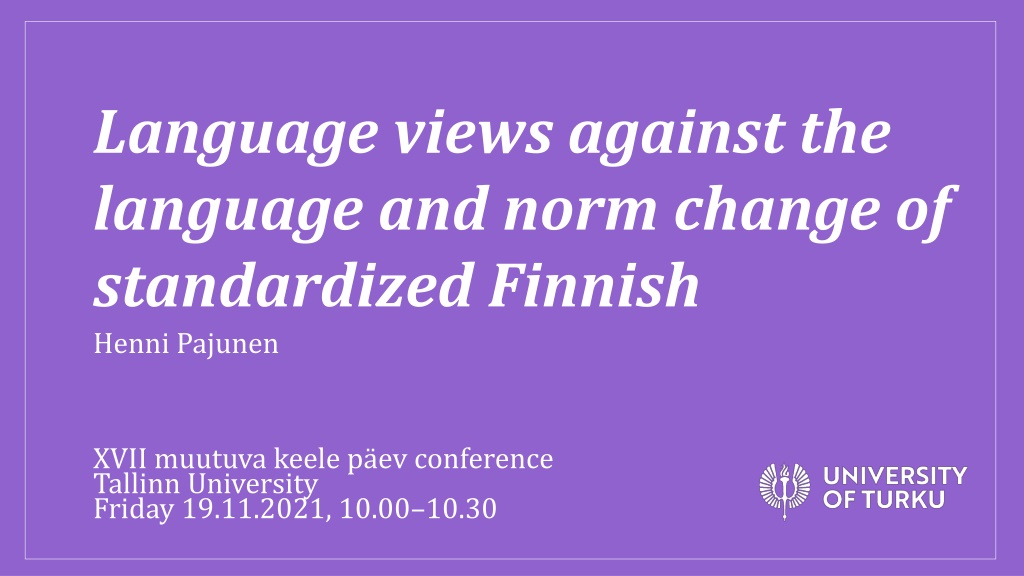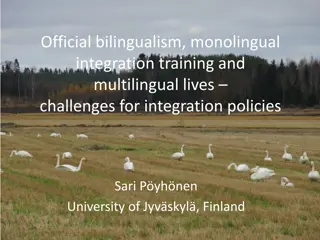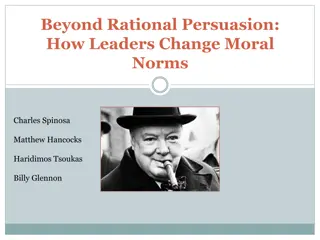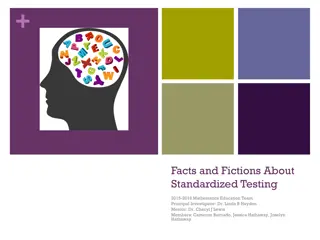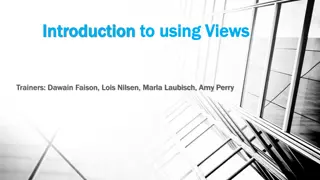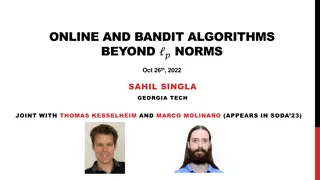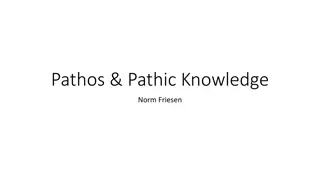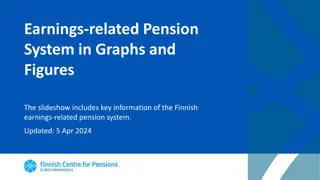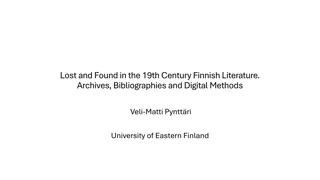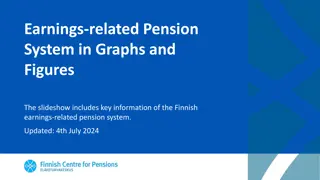Language Views and Norm Change in Standardized Finnish: An Examination by Henni Pajunen
Henni Pajunen explores language views and resistance to norm change in standardized Finnish at the XVII Muutuva Keele Päev Conference. The research delves into language planning in Finland, historical shifts in Finnish language norms, and specific orthographic norms relating to verbs. The study sheds light on the evolution of language perceptions and the challenges faced by language professionals in adapting to linguistic changes.
Download Presentation

Please find below an Image/Link to download the presentation.
The content on the website is provided AS IS for your information and personal use only. It may not be sold, licensed, or shared on other websites without obtaining consent from the author. Download presentation by click this link. If you encounter any issues during the download, it is possible that the publisher has removed the file from their server.
E N D
Presentation Transcript
Language views against the language and norm change of standardized Finnish Henni Pajunen XVII muutuva keele p ev conference Tallinn University Friday 19.11.2021, 10.00 10.30
Content Introduction Theory Research material and method Analysis Conclusions
Introduction: the research problem Behind all language norms, language planning and language policy solutions, is some idea of language. However, language changes, as do perceptions of it. One problematic norm, the language professionals unwillingness to change it, and the theories of language behind their stance.
Introduction: Current status of Finland s language planning Historically Finnish language planning has been normative, puristic, and formalistic. Around 1950s a change into a more functional, democratic and descriptive point of view. Standardized written Finnish changes slowly, although changes have been more frequent. Mostly orthographic changes.
Theory: The orthographic norm of OittA- and OttA-verbs (1/2) Applies three syllable long verbs that end in tta or tt and have o/ or oi/ i in the second syllable. o kir-joit-taa to write , a-loit-taa to start o ha-jot-taa to break , o-dot-taa to wait An artificial norm. An example of a failed language norm. Still problems with some verbs.
Theory: The orthographic norm of OittA- and OttA-verbs (2/2) Root / other reason Ends in a-/ - Spelling With i Example kirja book > kirjoittaa to write , ter edge > teroittaa to sharpen ehto term > ehdottaa to suggest , s hk electricity > s hk tt to wire hajo|ta to break , haja- a common root in words meaning broken , scattered ect.> hajottaa to break smtng intentionally ? > odottaa to wait kotkottaa to cackle, cluck , h h tt to laugh heartily Low style> laiskottaa to feel lazy , grand style > armoittaa to give grace M A I N Ends in o-/ - Without i Two possible roots Without i E X T R A Unknown root Descriptive verb Style Without i Without i Depends
Theory: Language views In Finnish kielik sitys understanding of language , in international, English research theory of language and language views (= LVs). A collective and social, shared view of the concept of language, but also shaped by the individual s experience. Can be implicit or explicit. Established LVs. LVs are strongly present in conscious language planning, and therefore in norms.
Research material and method (1/2) A survey for language professionals, about proof reading habits, opinions on current language planning and the orthographic norm of OittA- and OttA-verbs. 335 participants, mostly teachers, lecturers and translators. Revealed that majority do not support changing the norm, why?
Research material and method (2/2) Study of metalanguage. Metalanguage 2 contains latent cultural beliefs, values and perceptions of language shared by language users and the language community (Niedzielski & Preston 2010). Revealed through theory-based content analysis. Focus on answers given to one open-ended question: Official language planning has not interfered with the orthographic norm since the 1950s. Do you think the norm should be addressed? Why / why not?
Analysis Seven different LVs. Language-centric and language-user-centric. LVs as basic metaphors.
WRITTENLANGUAGEISNOTSPOKEN Spoken language should not affect written language. Places value to different forms of language. The ideal of the standard written language. Normative and formalistic view. In colloquial language and in informal contexts, the norm can be bypassed, and you can say m kirjotan , but I do not think it is alternative grammar but instead just a feature of colloquial language.
NUANCED, BEAUTIFUL AND LIVING LANGUAGE Heavily tied to the perceived nature of language. Not a tool, but a living, aesthetic organism. Dialogical view. Language is not mathematics: it should contain exceptions, illogicalities, and complex phenomena.
LANGUAGEISRULES Norms are the absolute value of language. The norm of OittA- and OttA-verbs reflects language use. Value of establishment. Formalistic view. However, I do not think that it [changing the norm] is absolutely necessary, because I think that rules, even those that are a little difficult, belong to language.
INTERNALNORM, INTERNALLANGUAGE Subjective, directly tied to the respondents own experience. Internal sense of language (kielitaju). LV of native speakers. Descriptive view. If I were leave out i from the words where it is now, they would become too casual if I were to add i to words where it is not now, they would become too tortuous. So, based my own internal grammar and experience I do not feel the need change it a bad argument, I know.
LANGUAGECHANGEFEELSSTRANGE A metaphorical view: language is heard, seen and felt. Non-normative spellings of OittA- and OttA-verbs feel wrong, bad or funny. Normative view. The only option would be to allow free choice between the spellings, as many would probably find the spelling kirjottaa" (sounds too casual) and tiedoittaa" (sounds hypercorrect) incorrect.
LANGUAGECHANGEISHARMFUL Norm or language change would have a negative effect. Inconveniences for language users. The function of language would be in danger. Functional, communicative view. I would not change the rule so that people who now write almost or completely correctly would not have to study the new rule.
USABLELANGUAGE Usability: how well a product is used to achieve a defined goal. As long as language works as a tool of communication, small norm problems are secondary. Functional, communicative view. On the other hand, if the norm violations do not make it difficult to understand the message, does it really matter ... after all, there is variation in language usage.
IN CONCLUSION LVs of language professionals: normative, formalistic, functional and communicational. Ideologies and principles of language planning: functionalism, democracy, communicative view. How these ideologies and views clash and affect the current landscape of language planning?
Thank you for your time! For more information, please contact me through my email: helypa@utu.fi.
Sources (1/2) COOK, GUY 1993: Discourse. 4. painos. Oxford: Oxford University Press. DUFVA, HANNELE ARO, MARI SUNI, MINNA SALO, OLLI-PEKKA 2011: Onko kielt olemassa? Teoreettinen kielitiede, soveltava kielitiede ja kielen oppimisen tutkimus. AFinLA-e Soveltavan kielitieteen tutkimuksia 3(2011) s. 22 34. https://journal.fi/afinla/article/view/4454 (14.7.2021). LAIHIALA-KANKAINEN, SIRKKA 1993: Formaalinen ja funktionaalinen traditio kielenopetuksessa. Kielenopetuksen oppihistoriallinen tausta antiikista valistukseen. Jyv skyl Studies in Education, Psychology and Social Research 99. Jyv skyl : Jyv skyl n yliopisto. http://urn.fi/URN:ISBN:978-951-39-8022-1 (28.9.2021). LINELL, PER 2005: The Written Language Bias in Linguistics: Its Nature, Origins and Transformations. Routledge: Lontoo. KARLSSON, FRED 1995: Normi, kielenk ytt ja kieliopit. Jan Rydman (toim.), Tutkimuksen etulinjassa. Tieteen p iv t 1995 s. 161 172. Helsinki: WSOY. MANTILA, HARRI 2005: Kielik sityksest kielenhuollon uusiin periaatteisiin. Kielikello 2/2005. https://www.kielikello.fi/-/kielikasityksesta-kielenhuollon-uusiin-periaatteisiin (26.7.2021). NIEDZIELSKI, NANCY & PRESTON, DENNIS 2010: Folk Linguistics. Uusintapainos. Berliini: De Gruyter Mouton.
Sources (2/2) NIKULA, TARJA 2010: Kielik sityksen ja kielenopetuksen kytk ksist . Kieli, koulutus ja yhteiskunta 1(1). https://www.kieliverkosto.fi/fi/journals/kieli-koulutus-ja-yhteiskunta-maaliskuu-2010/kielikasityksen-ja-kielenopetuksen- kytkoksista (19.7.2021). NORDLUND, TARU 2006: Kielioppia rakentamassa: otta- ja oitta-verbien normittamisen historiaa. Minna Harmanen ja Mari Siiroinen (toim.), Kielioppi koulussa s. 55 69. idinkielen opettajain liiton vuosikirja L. Helsinki: idinkielen opettajain liitto. PRESTON, DENNIS 2004: Folk metalanguage. Adam Jaworski Nikolas Coupland Dariusz Galasinski (toim.), Metalanguage: Social and Ideological Perspectives s. 75 101. Berliini: De Gruyter Mouton. SALO, OLLI-PEKKA 2006: Opetussuunnitelma muuttuu, muuttuuko oppikirja? Huomioita 7. luokan vieraiden kielten oppikirjojen kielik sityksist . P ivi Pietil Pekka Lintunen Jeini-Marja J rvinen (toim.), Kielenoppija t n n. AFinLan vuosikirja 2006 s. 237 254. Suomen soveltavan kielitieteen yhdistyksen julkaisuja no. 64. Jyv skyl : AFinLa. https://journal.fi/afinlavk/article/view/59964 (26.7.2021). VAATTOVAARA, JOHANNA 2009: Me n tapa puhua. Tornionlaakso pellolaisnuorten subjektiivisena paikkana ja murrealueena. V it skirja. Suomalaisen Kirjallisuuden Seuran Toimituksia 1224, Suomalaisen Kirjallisuuden Seura: Helsinki. TUOMI, JOUNI & SAJAVAARA, ANNELI 2018: Laadullinen tutkimus ja sis ll nanalyysi. Uudistettu laitos. Helsinki: Tammi.
